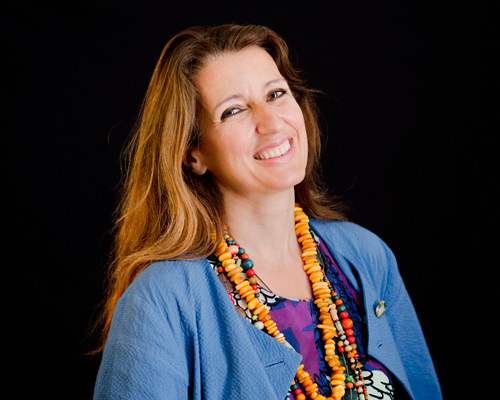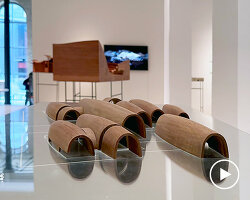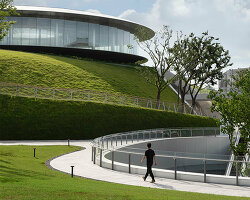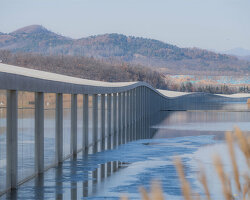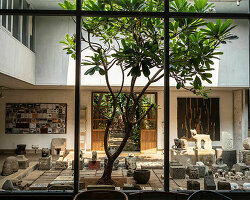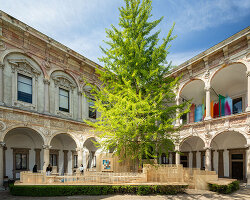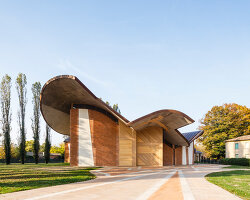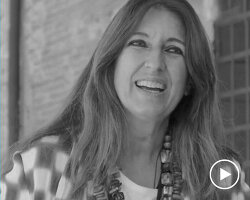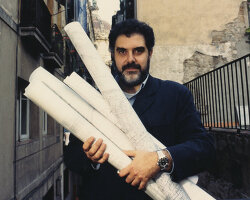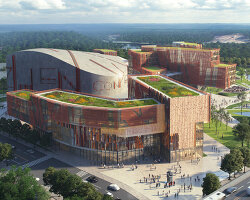benedetta tagliabue’s recent appointment to the pritzker jury — the body responsible for annually selecting the world’s most prestigious prize in architecture — is testament to her well rounded and internationally-cognizant understanding of the discipline. her barcelona-based practice EMBT began in partnership with architect enric miralles in the 1990s, and has carried on to realize numerous notable works such as the scottish parliament building, the santa caterina market in barcelona, and the spanish pavilion for expo shanghai. the office has numerous projects in progress in china, and were also recently awarded the commission for the ‘clichy – montfermeil’ metro station in paris based on a winning competition proposal.
in a recent conversation with designboom, benedetta speaks about her immediate involvement with the pritzker jury, EMBT’s current work, and her optimistic outlooks for contemporary architecture.
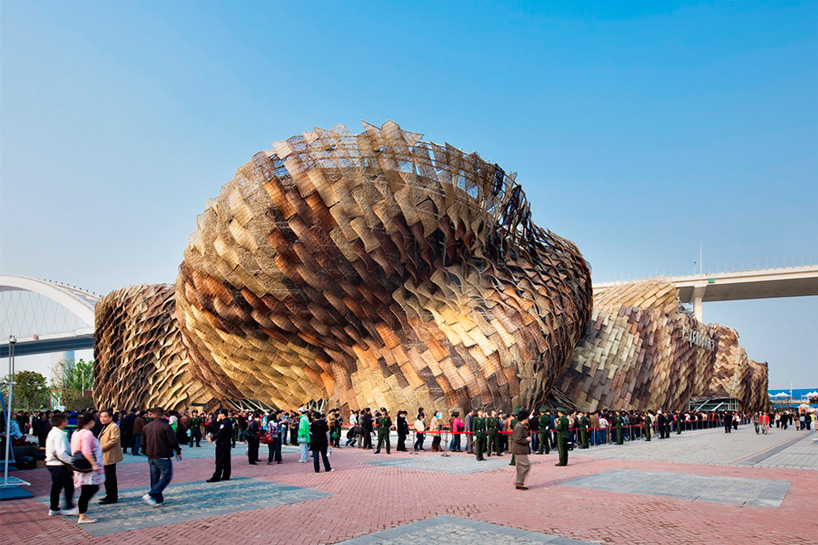
spanish pavilion for expo shanghai 2010
image by zhen zhonghai | portrait image by vicens gimenez
designboom (DB): congratulations on being selected for the pritzker jury!
benedetta tagliabue (BT): thank you, I did nothing! they just asked me to join and I am very happy be involved, so I had to start working!
DB: what is the process for the jury? what are you looking towards for your involvement?
BT: I am involved right away – this saturday I will fly somewhere as part of the pritzker jury’s tradition to have a trip together. they typically don’t like to say where the trip is going to be because it’s not necessarily the place where the prize will be chosen. they say that the trip is a beautiful chance to be together and look at architecture – as well as understand each other – because not all of the jury members are architects. it is a chance to start a conversation and develop a mutual understanding, so that when we really meet for a decision, which will be in january in new york, it’s much easier for us to make a decision. this is what they have explained to me.
DB: so in that initial meeting the jury members will discuss what you think the major developments are in architecture and what architects should be focused on in our contemporary state?
BT: exactly. I cannot tell you with direct experience because I haven’t done it before, but I have an idea that it is a very clever thing. I have done many juries in my life and they can often be very demanding, like the stirling prize jury for example. but, for the pritzker what happens is you travel with the other jury members — knowing that you have a big decision, which is affecting a lot of colleagues — and you really have to give your most sincere beliefs. the trip helps quite a lot to unite the jury members and I think this is very important because the jury is really acting like a unique organism. so this idea of going on a trip together to look at architecture, I think, is a really clever preparation.
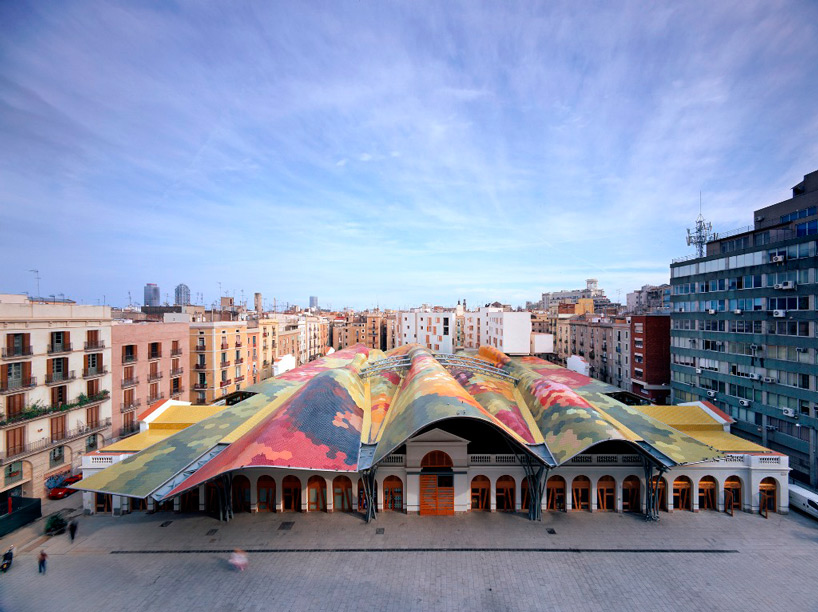
santa caterina market in barcelona, spain. 2005.
image © roland halbe
DB: in anticipation of the trip, what do you consider to be the most interesting development in architecture at present, and how might this impact the jury’s decision?
BT: I think everybody is conscious that there is a big change. also the pritzker prize is conscious that the prizes which have been given until now really refer to certain moments in architecture history, which is probably changing right now. so we don’t have to use the same eye and we all must be open towards a different way of conceiving architecture. I think that’s why last year the jury went to visit more exotic places, while also searching for a younger generation and different ways of acting beyond the biggest developments that you can think about. so I think the jury is looking for something which is really adapting to the times. and the times are really special.
I think this is what the pritzker is thinking. I base this on my own intuition, because it might not be like this, but it also seems so with shigeru ban being the latest prize winner. I think also the pritzker is really looking for something which is adapting and it’s very clear that they are adapting to new tendencies which are actually happening all over the globe. understanding architecture and its very basic needs.
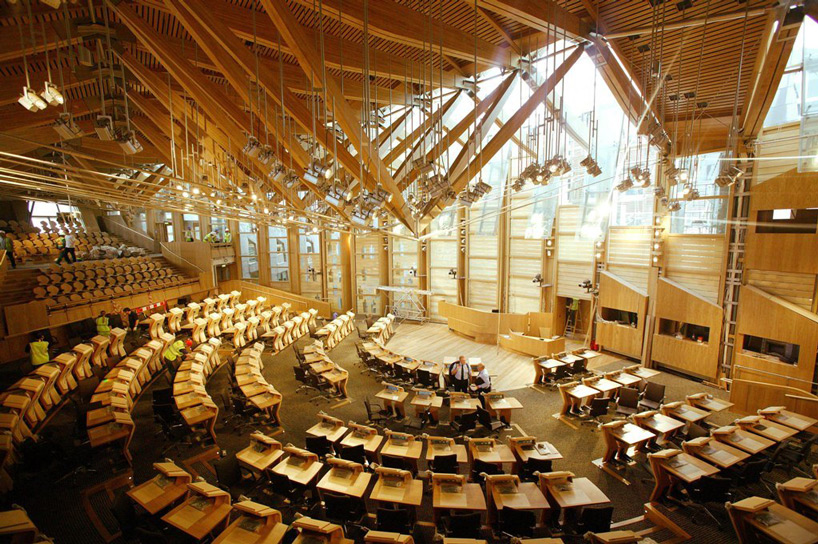
scottish parliament building. edinburg, UK. 2004.
image courtesy of scottish parliament corporate
DB: in looking at your design values, who or what has been the biggest influence on your work as an architect?
BT: well of course I always say that the biggest influence is my husband enric miralles. he was a person looking everywhere. I think I have the same attitude of being very curious. curious about the works of others, but also curious about what artists do or what other types of professions do, and what can be discovered through films. I think this is maybe the type of influence we can imagine in our own work – more broadly.
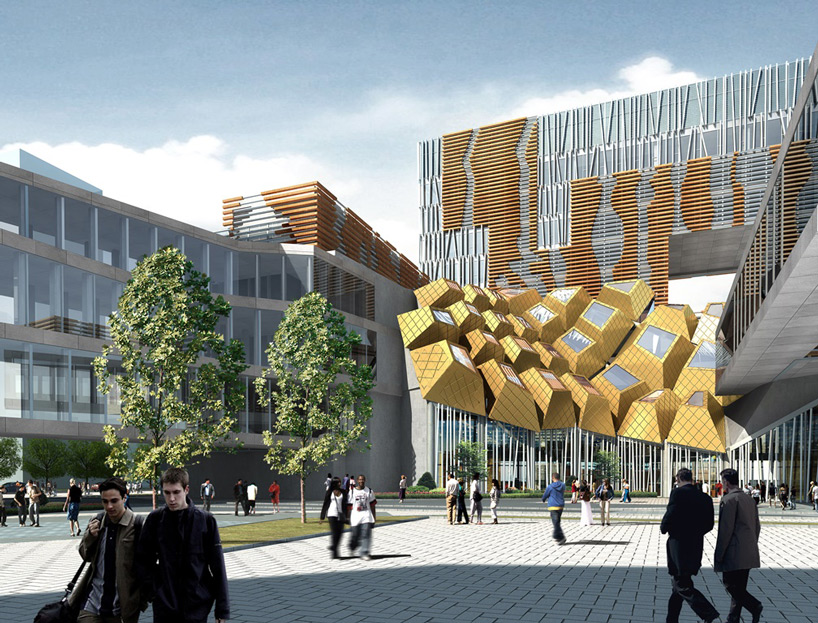
campus of fudan school of management. shanghai, china. in progress.
image courtesy of EMBT
DB: would you say this open-mindedness is your office’s strongest or most distinguishing quality?
BT: I think the open minded, open eyed way of thinking is very important. but also for example, I was seated just two minutes ago for an initial conversation with a fantastic japanese collaborator. I am italian, living in spain, in barcelona, and we are working on a competition in russia, while looking at and comparing with many other cities of the world. what we also try to do is to look at things with humor and with a good spirit, because as architects we are inside many great problems. we cannot solve everything of course, but what we can do is to try giving a good spirit in the little things that we do. so this is something that I think is very important now.
also we are becoming more basic. because when you are in a more restricted elite you can have a more sophisticated language. but now we are so open now in the world, so we have to understand what is the real communication – how to communicate very directly with one another. so I think we are becoming a little less sophisticated, but maybe more essential.
DB: is this in reference to your office specifically or architects in general?
BT: me specifically yes, but I think everybody who would like to be an architect in this crazy situation that we have now, would have to adapt to that. it’s not easy to adapt to the current situation and not be totally reductive. we have to always try to maintain an interesting point.
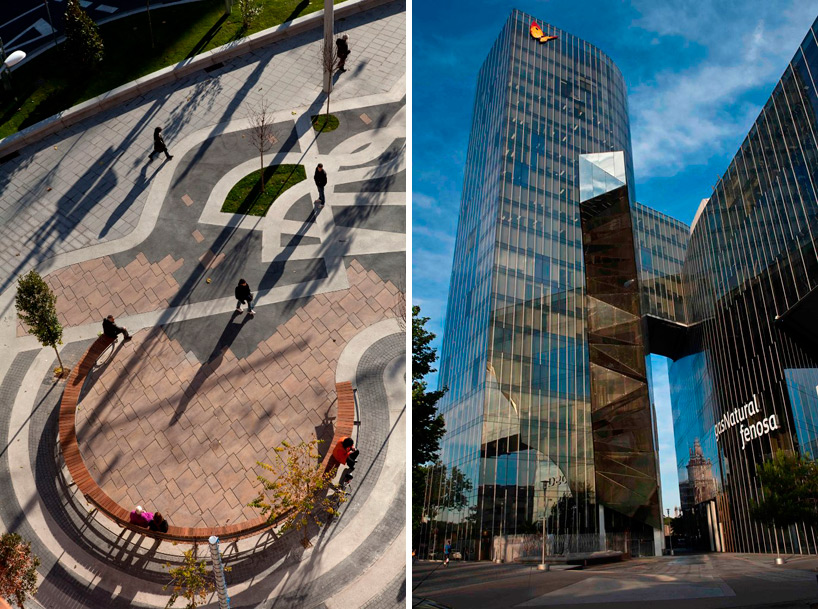
(left) plaza ricard viñes. lleida, spain. 2010 | image by alex gaultier
(right) gas natural office building. barcelona, spain. 2007 | image courtesy of gas natural company
DB: which architects working today do you admire most?
BT: I admire a lot of people. I admire them for different reasons, but I don’t have someone who is my goal. this is happening to everybody, because we are all competitors with each other. but at the same time, the competitors are the ones who look at the other with more attention. because sometimes we accept that the others are doing something we would like to be doing.
an example of an architect I admire is the spanish master rafael moneo. he came to foundation enric miralles and gave a talk about enric and his student years and his thoughts on the profession. he is so intelligent. and he uses this intelligence in his architecture in a particular way. I don’t follow directly what he is doing, or what he has done, but I admire him so much. his capacity of thinking and capacity of seeing the world. so in a way he is one of our masters. but of course I will never do something totally similar to what he is doing.
other architects are also adapting very far away. for example sejima – she is wonderful. she is not so far away in age from mine, and she also has a very different point of view and a different approach. I love peter cook, who has been a friend for a long time and who is a wonderful dreamer.
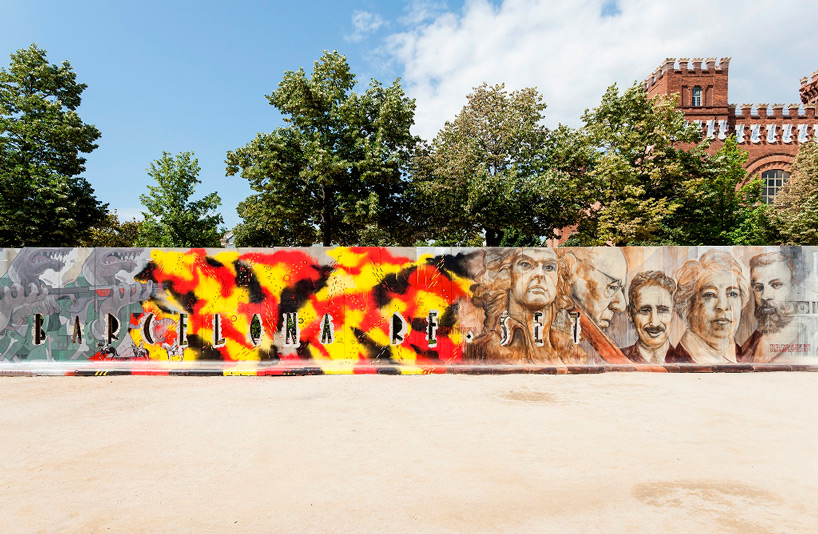
the wall at ciutadella park for BCN re.set. barcelona, spain. 2014 | image by marcela grassi
see designboom’s features on multiple pavilions realized for BCN re.set here
DB: what are some of the things foundation enric miralles is currently involved in, and how is the initiative promoting the legacy of his work?
BT: I feel it is important that the foundation is physically in the same building as our architecture office, because it is really a parallel place. in a way now I feel I couldn’t do it otherwise because enric miralles was a part of our office. he was so much inside that I could not separate. but now, because we are doing all this time, our office is also opening, I could make a space which is a little separate from the office but always in continuity with the building, and in that space I had the idea that we can tell more clearly what enric’s viewpoints were, explaining to the architects or to anyone interested, and at the same time work as enric liked into the projects.
enric was very practical, he hated to be totally theoretical – he thought a drawing could be more theoretical than 10 pages and so we are trying to propose the foundation as a place where young architects can work together with us in workshops and seminars. this year we had the beginning of a PhD program. it’s not a complete PhD but it is approved by the university of spain.
and we are starting right now, while studying enric and working with his spirit, to do projects. I think what we have done with ‘barcelona re.set’ is the result of this. inviting others to collaborate and make a series of projects happen. so this is my aim for the foundation. supporting young architects and never forgetting the fantastic point of view of enric – always discovering something new which had never existed before. it takes time and a lot of attention, because we will move things little by little, although I have many ideas in mind, I think we have to go one by one.
at the moment we have a collaborative project we would like to develop with the foundation. it is a center south of spain on the canary islands. it is a beautiful opportunity to work in a very sustainable and respectful place, really understanding what it means to make healthy architecture and to develop it in a more collaborative way.
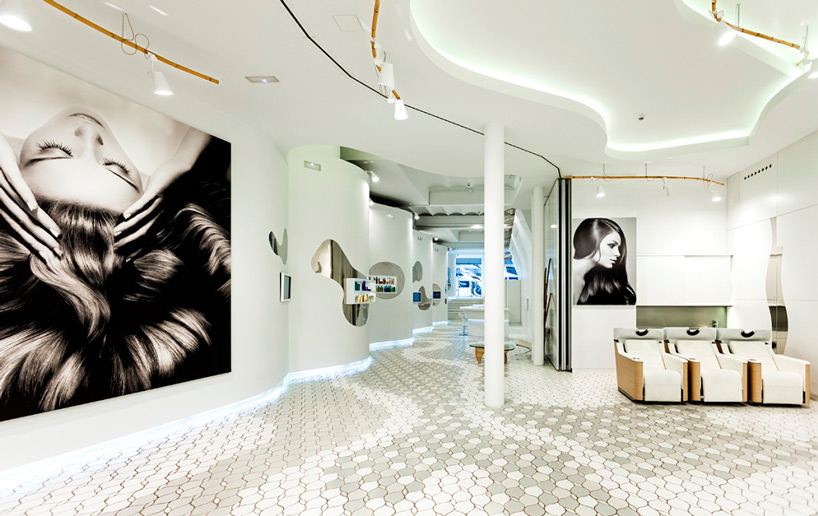
l’óreal academy. barcelona, spain. 2013
image by marcela grassi
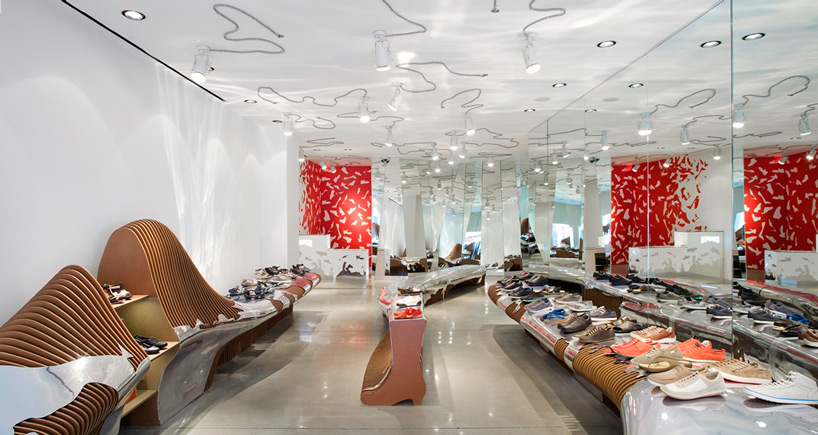
camper store. washington, usa. 2012
image by anais lafebre
DB: personally, what are you currently fascinated by outside of the profession, and how does it influence your work?
BT: I am opening up a lot to different cultures, so for example now the eastern cultures are really influential to me, as well as religion and spiritual ways of thinking. I realize that this was not in my original culture when I started to be an architect or when I was next to enric, but it is so important to me now. I don’t even notice, but I feel it is very strong.
DB: do you think this is in response to your increased amount of projects in china?
BT: yes also that, but I am very generally interested in asian cultures, or comparing asian philosophy with our western philosophy. yesterday I was reading a book from a german scholar. he is the son of a german architect and he decided to forget about german architecture and to apply his capacities in knowledge to nepal, tibet, and asia. he was explaining some of the rituals and ways of building so well, so beautifully, and I think it is fantastic. I think we are in a moment where the german mind is able to understand a very complex and different philosophy. and in this moment, a japanese architect – one I met with earlier today – is able to understand what we do in the western world. so for me we are in a very beautiful moment where this opening up and trying to understand each other is the most creative thing that we can do.
DB: yeah, with so much international practice going on we are somewhat forced to understand each other.
BT: yes we are forced, but I am delighted. because it could be really brutal, in a different scenario we might be limited to producing buildings with no character.
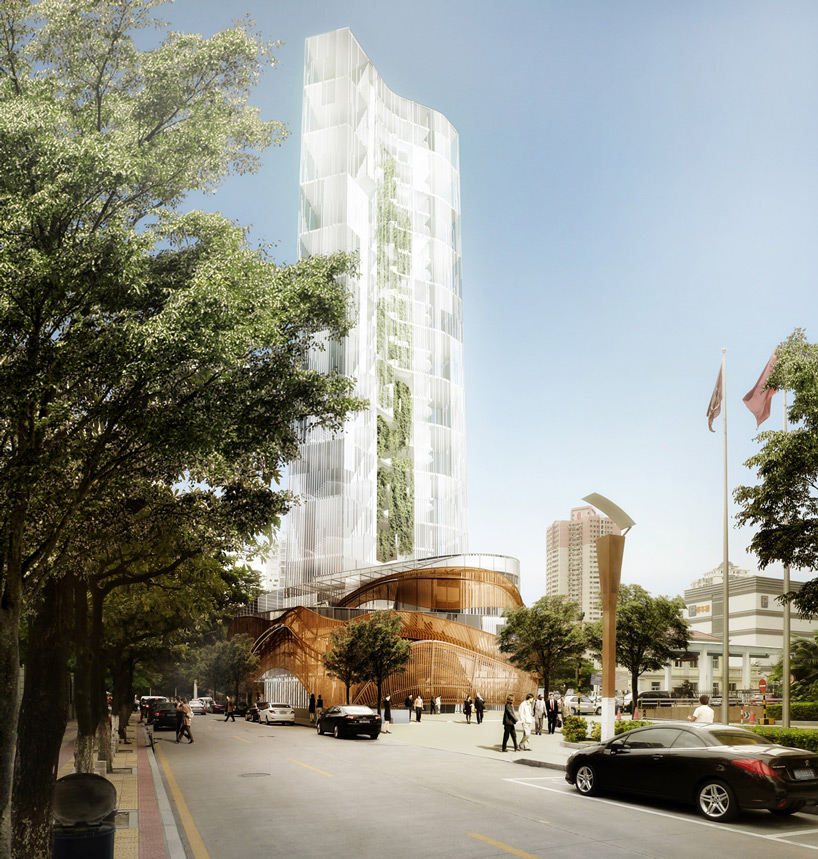
xiamen tower. xiamen, china. in progress
image courtesy of EMBT
DB: what advice would you give to students and young designers?
BT: to try to put their own life into the project they are working on. I think you need to have what is really interesting to you as a part of your project. and then the project can also become interesting for other people. I suggest students and young designers to insert personality and something that they really love into their projects.
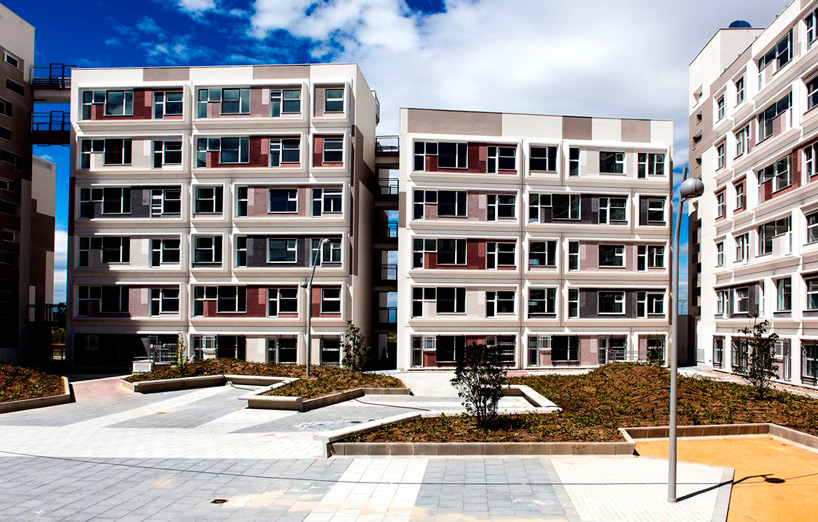
barajas social housing block. madrid, spain. 2013
image by victor moreno
DB: what is your personal motto?
BT: I think humanity is the most important thing for an architect. a phrase which made me understand cities and makes me so happy about working on cities is the quote, ‘the city is a real human thing’. I am investigating human behavior more and more because it is so important for making good architecture.
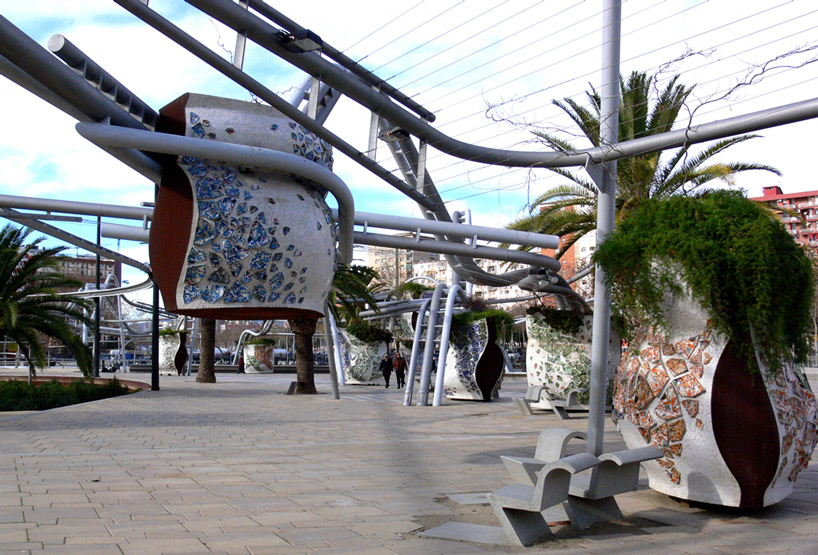
diagonal mar park. barcelona, spain. 2003
image by alex gaultier






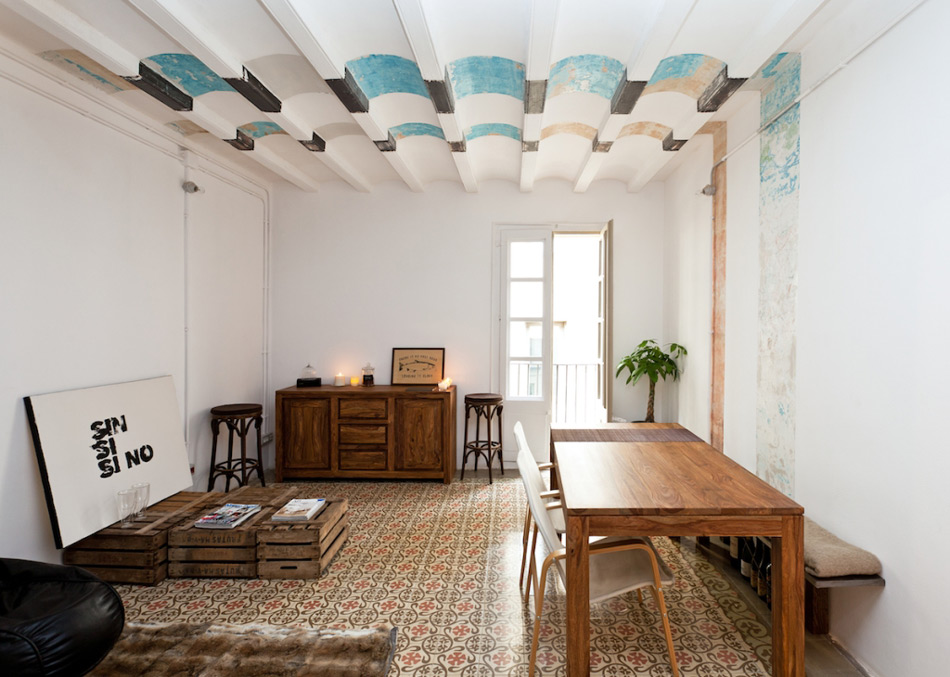
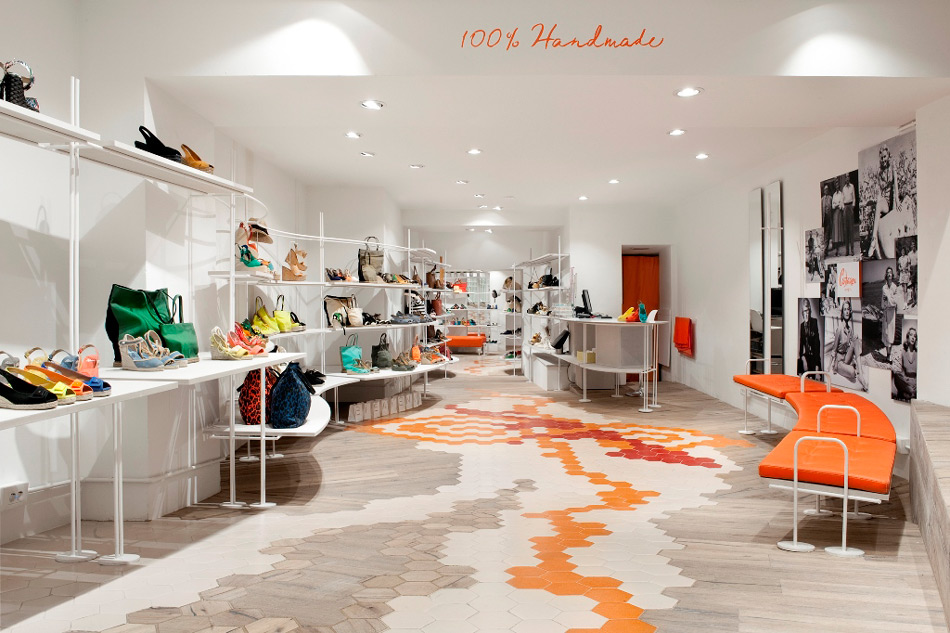
ARCHITECTURE INTERVIEWS (263)
EMBT / BENEDETTA TAGLIABUE (16)
PRODUCT LIBRARY
a diverse digital database that acts as a valuable guide in gaining insight and information about a product directly from the manufacturer, and serves as a rich reference point in developing a project or scheme.
